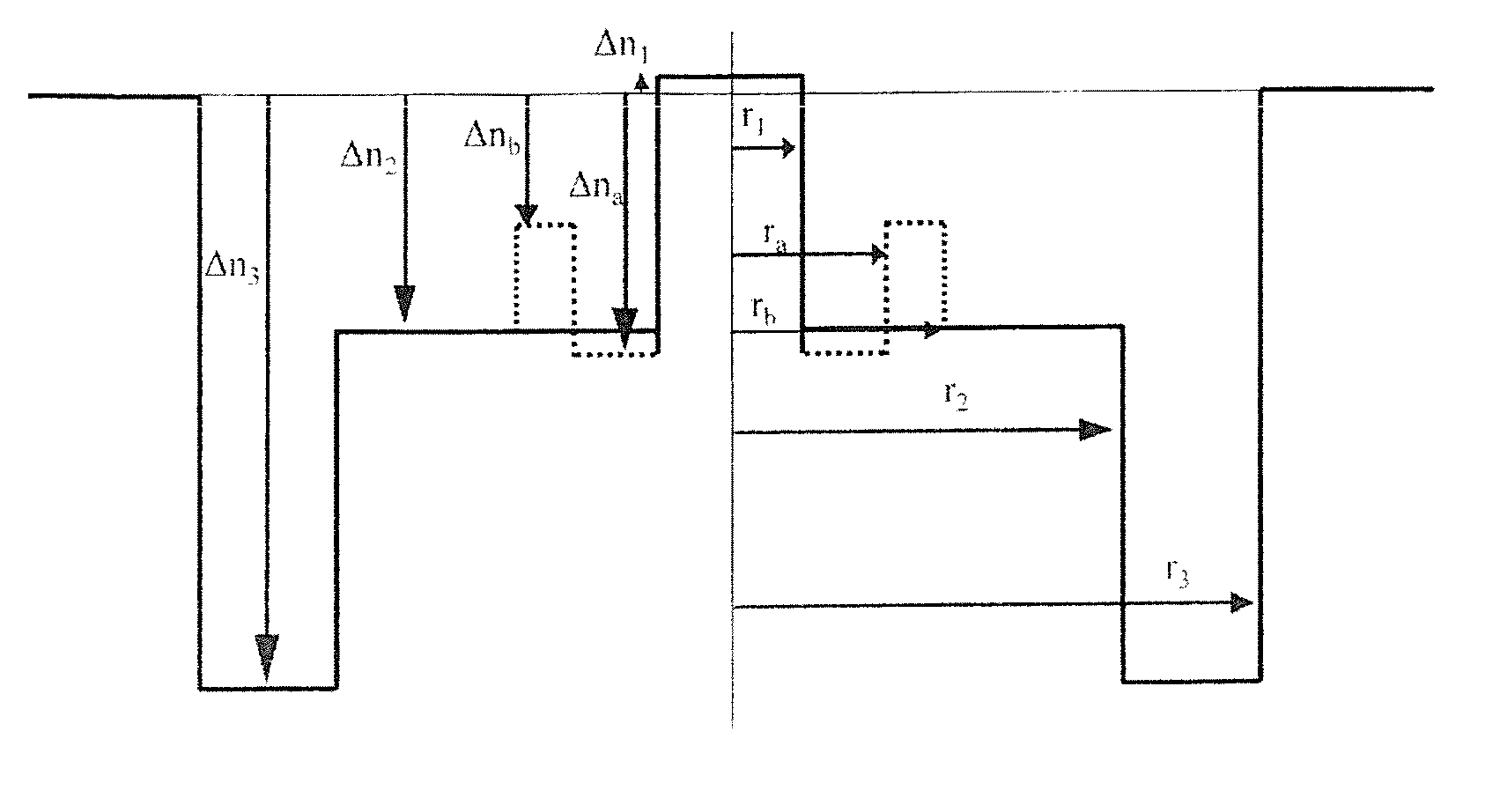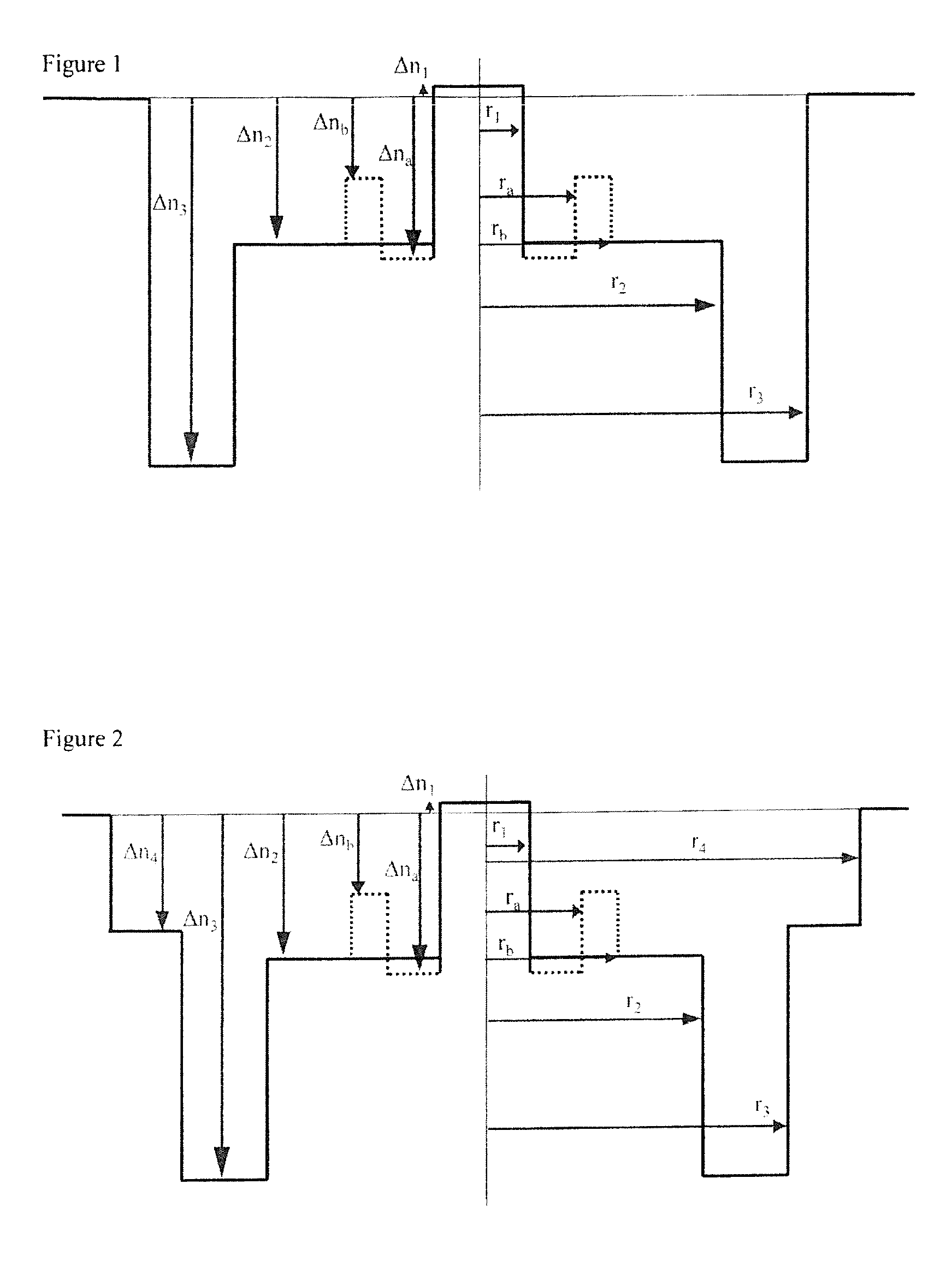Single mode optical fiber with depressed trench
a single-mode optical fiber and trench technology, applied in the field of line fibers, can solve the problems of increasing transmission losses, difficult to obtain and higher cost of producing fibers with doped cladding than fibers with pure silica cladding, so as to limit the leakage loss in lp01 propagation mode, the effect of reducing the radius of doped cladding
- Summary
- Abstract
- Description
- Claims
- Application Information
AI Technical Summary
Benefits of technology
Problems solved by technology
Method used
Image
Examples
first embodiment
[0050]According to the present invention illustrated in FIG. 1, the second portion of the depressed inner cladding constitutes the outer periphery of the depressed inner cladding. In other words, the second portion is directly surrounded by the outer optical cladding. In FIG. 1, the outer radius of the depressed inner cladding comprised between 28 and 40 μm, or even between 28 and 38 μm, or yet even between 28 and 36 μm, consequently corresponds to the radius r3 of the second portion of the depressed inner cladding. In this embodiment, the radius r2 of the first portion of the depressed inner cladding is such that the ratio r2 / r1 is greater than 6. This value ensures that the cable cut-off wavelength λcc is less than 1530 nm without this bringing about an increase in fundamental mode leakage losses.
second embodiment
[0051]In the present invention illustrated in FIG. 2, the second portion of the depressed inner cladding does not constitute the outer periphery of the depressed inner cladding. This depressed inner cladding further comprises a third portion that is supplementary or additional and that is located between the second portion of the depressed inner cladding and the outer optical cladding. In this embodiment, this third portion constitutes the outer periphery of the depressed inner cladding. This third portion of the depressed inner cladding has a radius r4 and a refractive index difference Δn4 with the outer optical cladding that is greater than the refractive index difference Δn3 of the second portion of the depressed inner cladding. The refractive index of the third portion is greater (i.e. less negative) than that of the second portion of the depressed inner cladding. In FIG. 2, the outer radius of the depressed inner cladding comprised between 28 and 40 μm, or yet even between 28 a...
PUM
| Property | Measurement | Unit |
|---|---|---|
| outer radius | aaaaa | aaaaa |
| outer radius | aaaaa | aaaaa |
| cut-off wavelength | aaaaa | aaaaa |
Abstract
Description
Claims
Application Information
 Login to View More
Login to View More - R&D
- Intellectual Property
- Life Sciences
- Materials
- Tech Scout
- Unparalleled Data Quality
- Higher Quality Content
- 60% Fewer Hallucinations
Browse by: Latest US Patents, China's latest patents, Technical Efficacy Thesaurus, Application Domain, Technology Topic, Popular Technical Reports.
© 2025 PatSnap. All rights reserved.Legal|Privacy policy|Modern Slavery Act Transparency Statement|Sitemap|About US| Contact US: help@patsnap.com


